The Ins and Outs of Bundle of Rights: What You Need to Know
What is a Bundle of Rights? This is a question that many people have, and it’s not surprising given that this term is often used in legal documents. In essence, a Bundle of Rights refers to the various rights that an owner has with regards to a particular property or asset. These rights can apply to both physical and intellectual property. For the purpose of this post, we will talk about how it applies to real estate.
What does the Bundle of Rights Include?
The real estate bundle of rights includes the right of enjoyment, right of control, right of exclusion, right of possession, and right of disposition. The bundle of rights concept doesn’t always apply when dealing with real estate properties due to government powers, zoning laws, and other restrictions that may be in place by local governments (and even homeowners associations).
Generally speaking, there are five main real estate ownership rights included within a bundle (in no particular order):
#1: Right of Enjoyment

The owner has the right to use the real property or real estate for enjoyment in any legal manner that he or she chooses. For example, an owner has the right to place the furniture they want on their property. However, they do not have the right to enjoy the property in a way that could infringe on other people or property owners’ rights.
#2: Right of Control

This right allows the owner to use the real estate in any way they see fit, as long as it’s not illegal or violating another party’s rights. Right of Control/Use can be greatly influenced by association or zoning laws.
#3: Right of Exclusion

This pertains to an owner’s ability to keep others from entering their property. Trespassing rules can change greatly by area, but most offer the ability to post “no trespassing” signs on the property, and to call the proper authorities to have anyone unlawfully occupying the space removed. It is also important to know that things like easements can supersede this owner’s right to exclusion.
#4: Right of Possession

Possession refers to having physical control over something and being able to access it at will without interference from others. This simply means the title owner has the legal right to own the property and possess all of their legal rights in relation to the property. The property belongs to the owner, and no one else can lay claim. We are far past the days of Viking and pirate raids.
#5: Right of Disposition

Right of Dispostion is the right to sell, lease, or give away real property.
A real estate owner can sell the real property, lease it to another party for rent or license it as well. Because this type of real property is considered real (as in immovable) it cannot be abandoned, so an owner must transfer title to another individual. The reason is that real property does not go away on its own and therefore requires a new person to come along and take over ownership.
The right of disposition is the most important right because without it the other rights are meaningless- you would have no way of monetizing your investment! In fact, if one were to look at their deed they would see that all owners possess this basic bundle of rights known as the fee simple absolute which gives them ultimate control over their real estate.
A deed should be executed and recorded in the county land records office when selling real property. This document is also called an instrument in many states. The deed transfers title to real property and lists the parties involved in the transfer (seller, buyer, lender, etc).
How Does this Relate to Deeds?
When real estate is transferred, it is done so by means of a deed. The seller executes a deed in order to transfer title (and all associated rights) over to another person or entity. This document will include specific language that outlines what rights are being conveyed as part of the sale transaction. It’s important for both buyers and sellers to understand the bundle of rights that come with the real estate they are buying or selling.
For example, let’s say you are purchasing a property with the intention of using it as your home. In this case, you would be interested in acquiring all the rights associated with the use and enjoyment of the property. On the other hand, if you’re buying a commercial building for investment purposes, then you may only be interested in acquiring the right to lease or sell it. The key is understanding what each right entails and how it can benefit (or hinder) your specific goals.
When transferring title to real estate, it’s important to remember that the bundle of rights goes along with it. By understanding what these rights are, both buyers
How Does a Bundle of Rights Get Transferred?
The transfer of a bundle of rights can be done in a variety of ways- through an outright sale, gift, devise (in the will), or lease. In order for the new owner to gain full control over the real estate and all associated rights, they must receive what’s called “good title.” This means that there are no outstanding mortgages, liens, clouds on the title, etc. that would prevent them from taking possession and using the property as they see fit.
What Happens if One of the Rights is Violated?
If someone violates one of the real estate owner’s rights, they can take action. The real estate owner has a number of options, depending on the situation. They could enforce their right through the courts, or try to negotiate with the person who violated their right. If negotiations fail, the real estate owner could file a lawsuit.
Enforcing one’s rights through the court system is often a long and expensive process. Many people choose to try to negotiate first to avoid going to court. However, if negotiations fail and the real estate owner feels that they have no other choice but to use force or file a lawsuit, they will need to be prepared for a lengthy battle. In some cases, it may even be necessary to hire an attorney.
The real estate owner is the only person who can decide whether or not to file a lawsuit. However, if someone else has violated one of the real estate owner’s rights, it could be considered theft and they may face criminal charges as well as a civil suit from the real estate owner. Therefore, when negotiating with someone who has violated your real estate rights, it is important to consider all possible outcomes before agreeing to any terms.
In Summary
When transferring title to real estate, it’s important to remember that the bundle of rights goes along with it. By understanding what these rights are, both buyers and sellers can be better informed about what they’re getting into and how the transfer will affect them. It’s also important for people to understand that these rights can be violated if someone takes action against them. If you’re thinking about buying or selling real estate, make sure you know what the bundle of rights includes so you can protect your interests.







